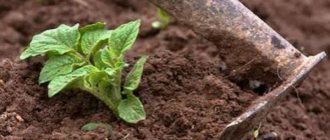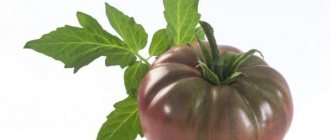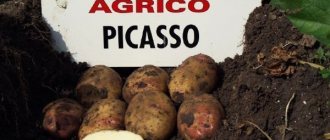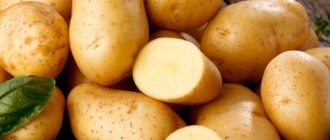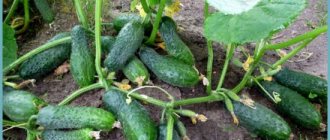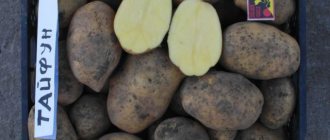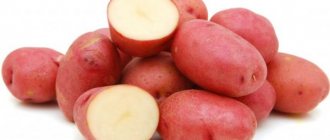Potato Skarb is a mid-season variety, resistant to diseases, unpretentious in care. But to obtain high yields, eliminate unfavorable conditions, and pest attacks, gardeners use some tricks. In the future, this helps to obtain even, marketable tubers. The article reveals detailed recommendations for growing Scrub potatoes.
History of origin of the variety
Potato Scarb was bred in Belarus by Z.A. Semenova, L.I. Pishchenko, E.G. Ryndina and A.E. Zuykov. Breeders developed the variety at the Research Institute of Potato and Horticulture in 1997.
In 2002, the variety was officially included in the Russian state register. It became permitted to import it into the country, grow and sell planting material. It is most optimal to plant tubers in the Ural, Volga-Vyatka, Central, and Northwestern regions of the Russian Federation. Scarb potatoes are popular in Belarus, Moldova, and Ukraine.
Description and characteristics
The Scarb variety is a mid-late variety. From the moment of the first shoots, ripening occurs in 80-90 days. The bushes are compact, of medium height. Very strong and formed from thick shoots. Some dark green foliage appears on the stems, oval-elongated in shape, with smooth edges.
A distinctive feature of potatoes is their high taste. The root vegetable does not become overcooked and does not darken during heat treatment. The peel of the vegetable is light golden, even, smooth. It has small, shallow eyes, evenly distributed over the entire surface.
Gardeners harvest 12-18 potatoes from one bush. The average weight of one tuber reaches up to 200 grams. From one hectare of area they get 50-60 tons of crop. Potatoes are oval, resistant to mechanical damage. The pulp is bright yellow, tender, homogeneous. Potatoes contain about 17% starch.
| Detailed characteristics of the variety | |
| Name | belongings |
| Maturation period | 80-90 days |
| general characteristics | mid-season variety with good yield and excellent taste, presentation |
| Productivity | up to 650 c/ha |
| Number of tubers in a bush | 18-20 |
| Weight of marketable tubers | up to 200 g |
| Starch content | 12-17% |
| Keeping quality | 93% |
| Flesh color | yellow |
| Peel color | yellow |
| Disease resistance | the bushes are highly resistant to all major nightshade diseases |
| Preferred Growing Regions | suitable for growing on all types of soil |
The plant is unpretentious and can grow in areas with different climatic conditions. Able to tolerate drought mildly, but does not respond well to waterlogging. It is especially dangerous if plants receive a lot of moisture at the initial stage of development.
Treasures (super elite)
Potatoes in a net 8 kg. We accept pre-orders, without prepayment. Potato variety “Skarb” is a mid-season table variety, salad type. Developed at the Belarusian Research Institute of Horticulture and Potato Growing. The word “treasure” means belongings, property, but in the Belarusian language it has another meaning - treasure, wealth. This name was not given to the potato by chance - when dug up in the nest, smooth oval tubers with yellow skin and pulp lie like golden nuggets. Additional conditions: warming and germination of up to 5 mm of seed material for 15 days before planting. Bush of medium height, intermediate type. The leaf is medium sized, open, dark green. Medium sized leaf. The edge wavy is absent or very weak. The corolla of the flower is medium-sized, white. The tubers are oval, the skin is yellow, smooth, the eyes are small, weight 150–200 g, up to 20 pieces per plant. Starch content 13-17%. It does not darken when cooked, so it can be used to make salads, chips, and potato pancakes. In the North-West region it accumulates 13-17% starch. The yield is record high – up to 65 t/ha. The variety is resistant to the pathogen of potato cancer and golden potato cyst nematode. Resistant to wrinkled and striped mosaics, black leg, rhizoctonia, wet rot, and viruses. The variety has a long dormant period - 120 days - and therefore is well stored. But sometimes there is no hurry to “wake up”. Before planting, the tubers must be well warmed and germinated, otherwise there will be lengthy and uneven germination. Another feature is that the tubers should never be cut: the growth of the eyes stops immediately. In addition, the tubers of “Skarb” are formed close to the surface and, to prevent them from turning green, they must be planted high and hilled several times during the season. Since the “Treasure” peel ripens in the soil only after the above-ground part is removed, it is recommended to mow the tops two to three weeks before harvesting.
>Belarusian potatoes “Skarb” variety description, characteristics, photos
Advantages and disadvantages
Scarb variety potatoes have many advantages and disadvantages. Before planting, gardeners must study them, taking into account all possible difficulties that may await during the process of growing and caring for:
| pros | Minuses |
|
|
Productivity of potato variety Skarb
With proper planting and care, Treasure will delight you with a bountiful harvest. The ideal natural environment for this potato is the North-Western and Central regions of Russia, as well as Belarus, Ukraine, and Moldova. In order for the tubers to receive more vitamins, gain the ability for long-term storage, and the harvest to be more abundant, a week or two before digging, you need to cut off the tops. Record collection rates reach 60-65 tons per hectare. It has good taste and long-term storage characteristics. Due to the low level of starch in the fruits, they are used to prepare chips, salads, and pancakes.
Preparing for landing
It is most optimal to plant potatoes on sandy and sandy loam soils - the variety gives the largest yields on them. Skarb is a potato that does not tolerate spring stagnation of water, therefore it is not recommended to grow it in lowlands and on heavy clay soils. It is advisable to plant potatoes in well-lit areas, protected from northern and eastern winds. Give preference to flat areas or with a slight slope to the south and southwest.
The field for planting begins to be prepared in the fall. The variety prefers soil where there is access to oxygen. Gardeners dig up soil using a spade and turn the layer over. Before this, 200 g of wood ash, 5-10 kg of manure or humus are scattered onto each square meter of the site. If it is not possible to purchase a lot of organic fertilizers and in order to save money, it is applied in the spring to the holes (20 g of ash and a handful of humus are required per plant). In the spring, after the soil has dried, the area is loosened with a rake.
Potato tubers are transferred to heat 3-4 weeks before planting. Small potatoes are selected for seeds in the fall. It is undesirable to use cut, large fruits for planting - this may cause a delay in the appearance of sprouts.
It is important to inspect each potato, excluding infected tubers or roots with severe damage. For preventive purposes, treat selected seeds with the following preparations:
- copper sulfate (1 tsp per bucket of water);
- “Prestige” (diluted with water in a ratio of 1:20);
- “Hom” (40 g per 10 liters of water).
Place the seed tubers in several layers in boxes or scatter them on the floor in a bright room where the temperature is +18-25 degrees. Once a week, turn the potatoes over and spray them with water - this will protect the tubers from flabbiness.
Planting and growing varieties
Attention should be paid to proper planting of potatoes and preparing the area for them.
Optimal planting dates
When landing, you should pay attention to the weather. The soil should be warmed up by at least +7...+9°С at a depth of 10–12 cm, and the average daily air temperature should not be lower than +8°С. Typically, such weather conditions occur in early May.
Tubers of the Scarb variety do not tolerate spring waterlogging of the soil. If it rains and the soil is not warm enough, it is better not to rush into planting.
Preparation of planting material
Potato tubers should begin to be prepared for planting 25 days before the intended planting in the ground. To do this, planting material is sorted out and healthy and unaffected specimens are selected for planting. Z
Important! A special feature of potato tubers of the Scarb variety is that they cannot be cut in half for cultivation. The productivity of such halves will be low.
Then the selected tubers are germinated - placed in wooden boxes and transferred to a warm room. It is recommended to periodically spray them with a little water. The temperature can be reduced to +10°C. A day before planting in the ground, the seed is disinfected with a weak solution of potassium permanganate or copper sulfate to prevent diseases.
Site preparation
To plant potatoes, you should choose a place well lit by the sun, where potatoes and other nightshade crops have not previously grown. Starting in the fall, all weeds are removed from it, organic matter (manure, humus, droppings) is added and shoveled onto the bayonet before frost.
Together with organic fertilizers, you can apply mineral fertilizers - 40 g of superphosphate and 15 g of potassium sulfate for every 1 m² of beds. In spring, it is enough to dig up the soil with half a shovel. Well-drained loose soils can simply be loosened with a pitchfork. As an option, you can plant green manure, and in the spring, mow them and sprinkle them with soil.
Light nutritious soils with a slightly acidic or neutral reaction are good for potatoes. Sandy loam, loamy, black soil and peat are suitable. Too acidic soils are alkalized with bone meal or ash, alkaline soils are acidified by adding peat or manure. Peat, humus from straw, turf, and sand are added to heavy clay soil.
Read more about the features of applying fertilizers for potatoes when planting.
Landing rules
The planting pattern largely depends on the quality of the soil. In light fertile soils, potatoes are buried to a depth of 10–12 cm with a distance between holes of 60×25–30 cm. On loams and heavy fertile soils they are planted to a depth of 8–10 cm.
Do not dig deeper into clay soil than 5–6 cm, and the distance between holes is 70×30–35 cm. It is recommended to add a little ash to the holes when planting.
Planting potatoes
Potatoes are planted to a depth of 8-10 cm at a distance of 30-35 cm from each other. At least 60 cm are left between the rows for further convenience when caring for the crop. Potatoes are planted by digging holes or trenches. The rows are arranged in the direction from south to north - this contributes to better heating and lighting of the plantings.
If the area has not been fertilized since the fall, add organic matter, superphosphate and potassium salt to each hole. Then the tubers are placed in the holes or trenches with the sprouts facing up and covered with a layer of soil.
Care
After the first shoots appear, potato plantings need proper care, because the yield and quality of root crops depends on this.
Loosening and weeding
During the entire growing season, the soil is loosened only three times, combined with weeding. About a week after planting, the bed where the potatoes are planted is raked. This will help you get rid of young weeds.
Then, after the sprouts appear, the area between the rows is loosened again - this helps facilitate access of water and air to the potato roots.
Watering
Potatoes of the Scarb variety need high-quality and complete watering. It is especially necessary during the growing season and during the formation of tubers. Water the plants twice a week. Approximately 2 weeks before the start of harvesting, stop watering the plants.
Hilling
Hilling is the process of filling the lower part of the plant with fresh, loose soil. This allows for a 20% increase in yield. Hilling is carried out early in the morning or in the evening after rain. The weather should be cloudy or cloudy. Over the entire season, potato hilling is carried out three times: after the shoots reach a height of up to 10 cm, a few weeks after the first procedure, during flowering.
Hilling is necessary for better formation of new roots and tubers. The soil receives a sufficient amount of oxygen, due to which the growth of root crops is enhanced.
You might be interested in knowing how to make the process of hilling potatoes easier using a manual hiller.
Top dressing
The above-ground parts of the plants are sprayed or fertilizers are applied to the holes. During the growing season, the procedure is carried out three times:
- Tops formation. A solution is prepared at the rate of 300 g of ash per 10 liters of water. The plant is sprayed. Or an infusion is prepared from weeds and watered over the plants.
- During the formation of buds. Water the potatoes with a solution of 60 g of ash, 20 g of potassium sulfate, diluted in 10 liters of water. This is enough for 1 square meter.
- During flowering. 40 g of superphosphate is added to each bush. The plants are also watered with a solution prepared from 40 g of nitrophoska and 200 g of mullein, diluted in 10 liters of water. One plant needs 500 ml of fertilizer.
When applying dry fertilizers, the bush is hilled. After watering or rain, the mixture will dissolve in the soil. With proper and timely feeding, the yield and resistance of potatoes to diseases increases.
Features of agricultural technology
Scarb seed potatoes are not particularly demanding regarding the conditions in which they are grown. But to obtain a larger harvest, it is strongly recommended to plant on heavy, fertile soils.
Landing
It is usually recommended to plant Scarb potatoes no earlier than the beginning of May. But planting dates can vary both earlier and later, depending on the growing region. If there is a certain risk of frost on the soil at the beginning of May, it is not recommended to take risks. In such a situation, you should wait a little.
Planting potatoes
When planting, tubers feel best in soil that has warmed up to +8 degrees to a depth of at least 10 meters. As a rule, such temperature indicators are achievable when the air during the day in the shade warms up to +20 C, and such weather persists for at least 3 days. For central Russia, such conditions are achieved by mid-May, and in more southern regions - already in April.
The soil requires some preparation before planting. It consists of the following manipulations:
- in the fall the soil is dug up and organic fertilizers are applied;
- in the spring before planting (about two weeks), the soil is processed again and mineral fertilizers are applied.
Planting a crop can be done in different ways. In recent years, the so-called Dutch technology has been increasingly used, which involves planting plants in slightly elevated ridges or furrows. This technique greatly simplifies subsequent planting care and guarantees sufficient oxygen access to the root system. During the planting process, a 60x35 centimeter pattern is usually used. Due to the varietal characteristics of Scarb potatoes, the holes should not be made too deep - 8-10 cm will be quite enough.
Care
After the first shoots appear, the gardener is required to begin making efforts to provide the potatoes with proper care. Usually we are talking about the following actions:
- loosening the soil (it is necessary to loosen the soil near the bush regularly, otherwise a crust will form that will block oxygen access to the roots);
- full watering (especially important at the stage of tuber formation; carried out twice a week);
- fertilizing (cow manure is optimal for this purpose);
- preventive treatment against insects and diseases (fungicides and copper sulfate solution are usually used).
If watering, loosening and fertilizing are carried out for the Skarb variety in the same way as for other potato varieties, then the fight against diseases and pests requires more detailed comments.
Loosening and fertilizing
Scarb potatoes are praised not only for their taste and fruit size, but also for their high resistance to harmful microorganisms and insects. But if you care for the crop poorly, the bushes may begin to suffer from late blight. One of the symptoms of this disease is the appearance of brown spots with light edges on the lower leaves of the bush. If the disease has just begun to manifest itself, it can be dealt with using solutions of Bodros liquid or copper sulfate.
Among insects, the crop can be affected by wireworms. It eats tubers and plant stems. Liming the soil, digging, and timely weeding will help get rid of the parasite.
Wireworm
Sometimes potatoes of the Scarb variety are attacked by Colorado potato beetles. Experienced gardeners usually have their own effective and time-tested strategy for dealing with the scourge. For those who are just beginning to discover the wisdom of gardening, we can recommend drugs such as Tabu, Aktara or Corado.
Harvesting
Potatoes are dug up on a dry and relatively warm day. This allows the crop to dry before storing it. If the tubers have diseases or were damaged during the digging process, they should be set aside separately. Before placing the potatoes in permanent storage, it is recommended to keep them in any dry place for a couple of weeks. During this period of time, the ripening process will have time to complete, and the crop will be ready for long-term storage.
Seed preparation
The work with potatoes does not stop with harvesting and storing them. You should take care of decent quality seed material for planting next year. For seeds, small and medium-sized potatoes are selected from the most productive bushes, which can be planted without much difficulty without cutting them.
Each potato selected should be carefully inspected for the presence of diseases, scab or rot. Such specimens are not suitable for seed. They should be discarded. The remaining seeds are treated with preparations like Prestige or Hom, as well as copper sulfate for preventive purposes.
Silvery potato scab
Next, the tubers for planting are placed in baskets or boxes in one or two layers and sent for storage. About a month before planting, potatoes need to be taken out of the cellar and started to germinate.
Tubers usually germinate unevenly. First, one leading sprout grows, and then the rest begin to grow. What is noteworthy is that the number of smaller sprouts can reach 7 pieces.
About once a week, the tubers should be turned over and sprayed with water - this procedure will avoid sagging.
Disease and pest control
Scarb potatoes are characterized by increased resistance to certain diseases. But it often encounters late blight, scab and leaf curling. To avoid crop loss, gardeners use preventive measures and treatment methods:
| Disease | Symptoms | Prevention and treatment |
| Late blight | Dark spots appear on leaves and stems. Over time, the aboveground part of the plants turns black and dries. Brown, rough spots sprout on the tubers. Potatoes should not be eaten. The disease actively spreads in rain and warm weather or with artificial irrigation. During winter storage, the fungal disease may not appear, but as soon as the tubers get warm, they will immediately begin to turn black. | It is important to observe crop rotation and not grow potatoes in one plot for more than three years in a row. Seeds are inspected twice: before germination and before planting. If you plant potatoes in the same area where the root crop suffered from late blight last season, the young bushes are first sprayed with a solution of copper sulfate at the rate of 20 g per 10 liters of water. Repeat the procedure after 7-10 days. Fungicides are used for prevention and treatment:
Prevention is carried out during the budding period. Plant treatment begins at the first signs of disease. Repeat the procedure every 7-10 days. The last treatment is carried out 20 days before harvesting the potatoes. In the fall, remove small tubers and tops from the field and burn them. |
| Common scab | The manifestation of the disease begins on the tubers - the ulcers increase and cover the entire surface. The pulp does not change in appearance, but its taste becomes less pleasant. Starch content decreases. During winter storage, infected tubers are affected by dry and wet rot. | It is required to observe crop rotation, grow and plow green manure: lupine, mustard, vetch, clover. Acidic fertilizers are also used, for example, ammonium sulfate (600 g per hundred square meters). The gardener must discard infected tubers and treat the rest with the drug “Maxim” (4 g per 10 kg of potatoes) before planting. During the period of bush growth, they are treated with “Fito Plus” (1 packet per 3 liters of water). During the budding phase, plants are sprayed with growth stimulator “Zircon” (13 drops per 10 liters of water). |
| Curling leaves | The lower leaves not only curl, but also become stiff. The upper foliage is deformed. The plant seems weakened and lethargic. On a section of the tuber, mesh necrosis is observed. The seeds take a long time to germinate and the sprouts are thin. Productivity is reduced by up to 50%. | Crop rotation and control of vector pests are required. It is important to provide the potatoes with proper care and create the conditions that the variety needs (do not over-moisten, loosen, germinate for a long time). There is no point in fighting the disease with chemical and biological drugs - they are not effective. Sick bushes are dug up and removed from the site. |
Harvesting and how to properly store it?
15-20 days before harvesting, they stop watering the plants, and their aboveground part is mowed down, leaving short stems without green mass. The tops are collected and burned. It is recommended to carry out cleaning in dry and warm weather.
Potatoes need to be thoroughly dried and sorted. Tubers with mechanical damage or root crops with signs of disease are set aside separately. Selected potatoes are placed in a dry room for several weeks to fully ripen.
Next, the tubers are transferred to a room where the air temperature is +2-5 degrees, humidity is 80-85%. Potatoes for planting are placed in separate wooden boxes.
Find more information about proper storage of potatoes for eating during the winter or for subsequent planting of tubers in the spring here.
Collection and storage of potatoes
They begin to dig up potatoes of this variety in the second half of September. 14 days before this process, remove the tops and stop watering. After the root crops have been collected, they need to be dried and then sorted.
Did you know? Europeans did not immediately recognize potatoes as an edible root vegetable. Its excellent taste and nutritional qualities were scientifically proven by the Frenchman Parmentier. Some French potato dishes are named after this agronomist.
Damaged fruits (rotten, with cracks and damage) need to be discarded, good specimens selected for planting in the spring and placed in a separate container. It is preferable to store root vegetables in boxes made of wood and plastic. It is best to choose a cellar that is ventilated as a storage location.
Recommended temperature for storage is +2…+5°С. This variety has excellent keeping quality. It keeps well throughout the year. The Skarb potato variety can produce very high yields, is resistant to many potato diseases and is perfectly stored.
Reviews from farmers and gardeners
On the Internet you can find many reviews about Scrub potatoes. Some speak positively about it, while others are of the opinion that there are other good varieties that are better than Scrub.
★★★★★
Marina, 45 years old, gardener. Most of my plot is occupied by Scrub potatoes.
I plant early, in the second half of April. The bushes are powerful, spreading, with dense foliage. From time to time I engage in hilling and collecting Colorado potato beetles. By the way, there are fewer and fewer of these pests every year. I harvest already in mid-August. Sometimes I collect half a bucket of tubers from one bush. I like the taste and appearance of potatoes. I make puree from it and add it to soups and salads. ★★★★★
Anna, 25 years old, I live in a private house. I have been growing Scarb potatoes for a very long time.
I liked it due to the sweetish taste and yellowish tint of the pulp and peel. I can say with confidence that the variety is unpretentious if you add compost or humus to the soil in time and do not forget to hill the plant. I love this variety of mashed potatoes. ★★★★★
Ivan, 32 years old, farmer. A neighbor advised me to plant Scarb potatoes on the plot.
What attracted me to it was its long-term storage and preservation of all its qualities: it does not deteriorate externally and remains just as tasty. This year we didn’t even have to dig new potatoes, because there was so much harvest that last year’s root crops were eaten up until the fall. Hide
Add your review
It’s not for nothing that the Scarb potato got its name; many consider it a real treasure. The variety is easy to care for if you take care of all important procedures in a timely manner. In addition, they get an excellent harvest from one hectare. The fruits are stored for a long time and can withstand transportation over long distances without losing their presentation.
0
0
Copy link



